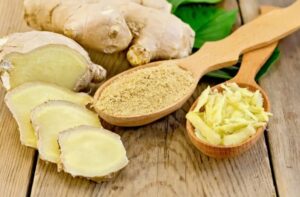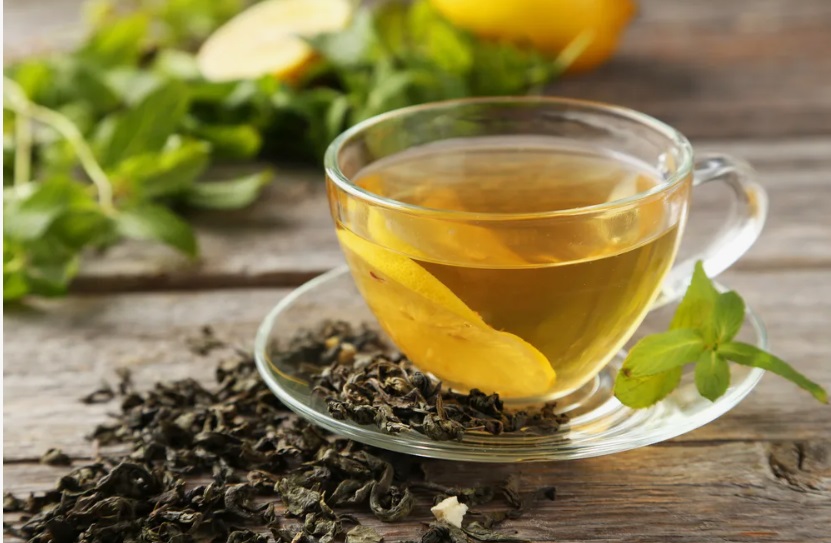What is Ginger and Where Does It Grow? | Benefits, Uses, and Health Cures
Ginger, scientifically known as Zingiber officinale, is a flowering plant widely celebrated for its rhizome (underground stem), which is the part commonly used as a spice or for medicinal purposes. Where does it grow? Native to Southeast Asia, ginger has been cultivated and valued for thousands of years for its distinct aroma, sharp flavor, and numerous health benefits. It is a staple ingredient in various cuisines and medicinal systems, such as traditional Chinese medicine and Ayurveda. Where Does It Grow?
Where Does Ginger Grow?
Ginger thrives in tropical and subtropical climates and requires warm temperatures, humidity, and well-drained soil to grow. What is Ginger. Where does it grow? It is commonly cultivated in countries like India, China, Indonesia, Jamaica, Nigeria, and Thailand, which account for the majority of the world’s ginger production. What is Ginger. The plant grows to about 3 feet tall and features thin leaves and greenish-purple flowers. However, it’s the knobby, beige rhizome beneath the soil that holds all the potency and culinary appeal. Where does it grow?
What are the Benefits of Ginger?
Ginger is often called a wonder food, and for good reason. What is Ginger. It is loaded with bioactive compounds and nutrients that contribute to vibrant health. Let’s explore some of its key benefits:
-
Anti-Inflammatory and Antioxidant Properties
Ginger is a powerful anti-inflammatory and antioxidant because it contains gingerol, a bioactive compound that has these effects. Where does it grow? These properties can help reduce oxidative stress and inflammation in the body, which are linked to chronic diseases such as heart disease, arthritis, and diabetes.
-
Digestive Health
Ginger is well-known for its ability to ease gastrointestinal discomfort. It speeds up gastric emptying, reduces bloating, and helps combat conditions like indigestion and irritable bowel syndrome (IBS). Its soothing effect makes it a go-to remedy for nausea, especially related to pregnancy, motion sickness, or chemotherapy.
-
Immune-Boosting Benefits
The antimicrobial and antiviral properties of ginger help strengthen the immune system. A warm ginger tea is a common home remedy for colds, sore throats, and flu-like symptoms.
-
Reduces Muscle Pain and Soreness
Ginger has been shown to reduce muscle pain and fatigue caused by exercise or physical activity, thanks to its anti-inflammatory capabilities.
-
Improves Heart Health
Studies suggest that ginger may lower cholesterol levels, reduce blood sugar, and improve circulation—benefits that contribute to overall heart health.
-
Supports Weight Loss
Ginger can aid in weight management by promoting feelings of fullness, improving digestion, and boosting metabolism.
Where and How Can We Use Ginger?
Ginger is a versatile ingredient that can be used in various ways, depending on whether it’s consumed fresh, dried, powdered, pickled, or in juice form. Here’s how you can incorporate ginger into your routine:
-
Culinary Uses
-
Freshly grated ginger adds a zesty flavor to savory dishes, soups, and marinades.
-
Powdered ginger is commonly used in baking (gingerbread, cakes, cookies) and spice blends like chai tea.
-
Pickled ginger is a beloved condiment alongside sushi and other Asian dishes.
-
Ginger juice or slices can be added to smoothies, lemonade, and teas for a refreshing twist.
-
Beverages
Ginger tea is a classic remedy for warming up on a cold day or soothing an upset stomach. Ginger-infused drinks like ginger ale and kombucha are also popular.
-
In Skincare and Wellness
Ginger oil and extracts are often used in beauty products for their anti-aging and skin-soothing properties. A warm ginger compress or body scrub can help reduce inflammation and improve circulation.
-
Traditional Medicine
Fresh or dried ginger is a key ingredient in many herbal medicines, homemade remedies, and tonics designed to detox the body or improve immune function.
What are its Health Cures?
For centuries, ginger has been a cornerstone in traditional medicine systems across the globe due to its impressive health-curing abilities. Here are some conditions it is known to help alleviate:
-
Nausea and Vomiting
Whether it’s morning sickness during pregnancy or motion sickness on a rocky sea voyage, ginger is a proven natural remedy for reducing nausea.
-
Cold and Flu Relief
A hot cup of ginger tea is a time-tested solution for soothing sore throats, reducing coughs, and easing sinus congestion.
-
Joint Pain and Arthritis
The anti-inflammatory properties in ginger can help alleviate pain and stiffness caused by osteoarthritis or rheumatoid arthritis when consumed or applied topically as a poultice.
-
Menstrual Pain
Ginger tea or supplements can help reduce menstrual cramps due to its ability to lower the production of prostaglandins, the hormones responsible for pain and inflammation.
-
Diabetes Management
Ginger has been shown to improve insulin sensitivity and lower fasting blood sugar levels, making it a useful addition to a diabetes-friendly diet.
-
Migraine Relief
Fresh ginger or ginger powder can work as a natural pain reliever for headaches or migraines, offering a gentler alternative to over-the-counter painkillers.
-
Cancer Prevention and Support
Preliminary research indicates that ginger may help prevent the growth of certain cancer cells due to its antioxidant properties, though further studies are needed in this field.

Unleash the Power of Ginger: Delicious and Health-Boosting Dishes for Everyday Life
Ginger, with its pungent aroma and zesty flavor, is more than just a spice – it’s a culinary powerhouse and a natural remedy all rolled into one. From stir-fries to soothing teas, ginger’s versatility makes it a fantastic addition to a wide range of dishes, while its potent health benefits offer a welcome boost to your well-being.
Ginger’s Culinary Versatility: Taking Your Dishes to the Next Level
Ginger’s unique flavor profile makes it a star player in both savory and sweet dishes. Here are some practical and delicious ways to incorporate ginger into your everyday meals:
Stir-fries and Asian-Inspired Cuisine: Ginger is a staple in Asian cooking, lending warmth and depth to stir-fries, curries, and noodle dishes. Try adding freshly grated ginger to your favorite vegetable or protein stir-fry for an authentic and flavorful experience.
Soups and Stews: A knob of ginger can significantly elevate the taste of soups and stews, particularly those featuring vegetables like carrots, sweet potatoes, or butternut squash. It adds a subtle spice and complexity that complements the sweetness of these ingredients.
Marinades and Sauces: Ginger is a perfect ingredient for marinades, especially for meats like chicken, pork, and seafood. It tenderizes the meat and infuses it with its distinctive flavor. It also works wonders in sauces for everything from grilled salmon to roasted vegetables.
Baked Goods and Desserts: Don’t underestimate ginger’s potential in the realm of baking! From gingerbread cookies and muffins to ginger-infused cakes and pies, its warm and comforting flavor adds a delightful twist to classic treats.
Beverages: Ginger tea, a classic remedy for various ailments, is simple to make by steeping sliced or grated ginger in hot water. You can also add ginger to smoothies, juices, and cocktails for a refreshing and invigorating kick.
Beyond Flavor: The Health Benefits of Ginger
Beyond its culinary contributions, ginger boasts a wealth of health benefits, making it a valuable addition to your diet.
Digestive Aid: Ginger is well-known for its ability to soothe upset stomachs, alleviate nausea, and improve digestion. It helps stimulate the production of digestive enzymes and promotes healthy gut motility.
Anti-Inflammatory Properties: Ginger contains compounds like gingerol, which possess potent anti-inflammatory properties. These compounds may help reduce pain and stiffness associated with conditions like arthritis.
Pain Relief: Studies have shown that ginger can effectively reduce muscle pain and soreness after exercise. It’s also been found to alleviate menstrual cramps.
Immune Boosting: Ginger’s antioxidant and anti-inflammatory properties can help strengthen the immune system and protect against illness.
Ginger: Your Natural Ally Against Colds and Flu
Ginger has been traditionally used as a natural remedy for cold and flu symptoms, and for good reason! Its antiviral and antibacterial properties can help fight off infections, while its warming effect can soothe a sore throat and clear congestion.
Here are some ways to use ginger to combat colds and flu:
Ginger Tea: The most common remedy for colds and flu, ginger tea can help soothe a sore throat, clear congestion, and ease nausea. Add honey and lemon for extra comfort and immune support.
Ginger-Honey Syrup: Combine grated ginger with honey and let it steep for several hours. The resulting syrup can be taken by the spoonful to soothe a cough and relieve congestion.
Ginger Steam Inhalation: Add a few slices of ginger to a bowl of hot water and inhale the steam to help clear nasal passages and relieve sinus congestion.
Incorporating ginger into your diet is easy and rewarding. From enhancing the flavor of your favorite dishes to boosting your health and fighting off colds, this versatile spice offers a wealth of benefits. So, embrace the power of ginger and unlock its delicious and health-boosting potential today!
Conclusion
Ginger is much more than a flavorful spice—it’s a powerhouse of benefits for your overall well-being. From its origin in Asia to becoming a kitchen and medicine cabinet staple worldwide, ginger has proven its versatility as a culinary ingredient, holistic remedy, and health booster. Incorporating ginger into your diet or wellness practices, whether as a tea, spice, or supplement, may lead to improved health and vitality. As with any natural remedy, consult with a healthcare professional before using ginger for medicinal purposes, especially if you’re on medication or have pre-existing health conditions.
You can read below writings
What is Red Cabbage and Where Does It Grow?
what is green tea and where does it grow






